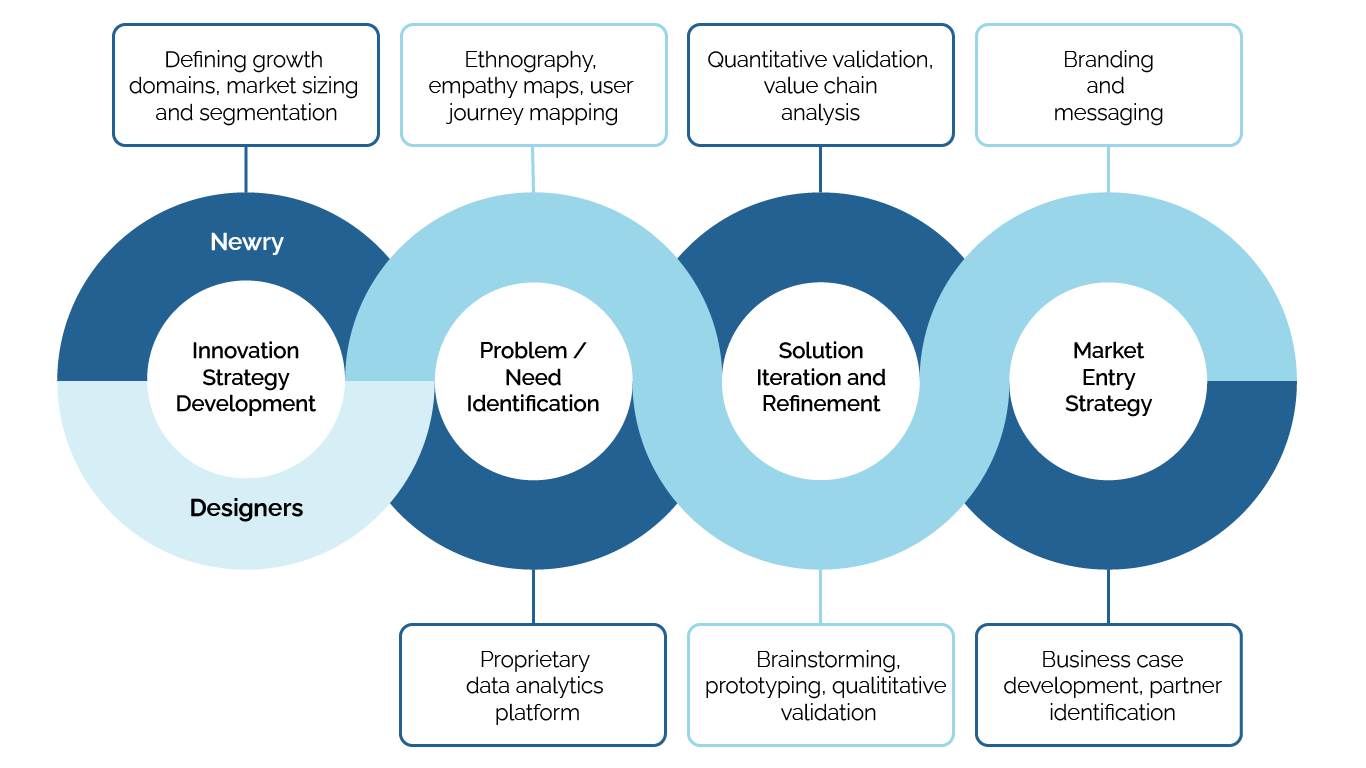Why QUANTIFIED DESIGN™?
Design Thinking prioritizes user experience. Businesses prioritize financial returns in markets they can reasonably access. In the gap between the two, great innovations sometimes get lost.
The QUANTIFIED DESIGN™ process bridges the gap between design-led development and the strategic realities of your business with objective, data-driven analysis, ensuring faster learning, smoother pivots, and confidence that at the end of the process, you’ll have something to offer that customers really want.
How It Works
Step 1: Innovation Strategy Development
Many companies undertake this scoping step as an internal initiative, but Newry can support the process of identifying and defining growth priorities through trend analysis, market sizing, customer segmentation, and structured brainstorming.
Step 2: Problem Need / Identification
In this step, the Design Thinking team leverages empathy-based primary research tools (ethnography, journey mapping, etc.) to understand where unmet needs exist in the market domains of interest. In some cases, Newry can leverage the same data analytics platform that powers SONAR™ to surface specific problems to solve, but our main contribution is in vetting, validating, and prioritizing opportunities identified by the designers.
Step 3: Solution Iteration and Refinement
Once everyone has agreed on a high-priority problem area to tackle (users have a major pain point; client has differentiated ability to solve for that pain point; the addressable opportunity is large enough to justify pursuit), the design team begins their iterative process of designing and refining a solution while Newry determines which version of the final product or service will satisfy the needs of the ecosystem as a whole, not just the consumer. This work involves conducting value chain analysis, evaluating competitive offerings, and hypothesizing and testing different business models with a broad range of stakeholders.
Step 4: Market Entry Strategy
Newry fleshes out the business case and channel strategy for the final product (including partner identification where appropriate) while the Design Thinking team provides critical branding and messaging insights.
What You Get
Conviction: A rigorous mechanism for prioritizing where to focus so that you can be sure you’re working on the most valuable problem.
Direction: Orient to the market ecosystem so you know where to find profit pools, who holds decision-making power, how you’ll compete, and more.
Verification: Bring internal stakeholders on board with convincing proof that your innovation will meet revenue and timing targets.

